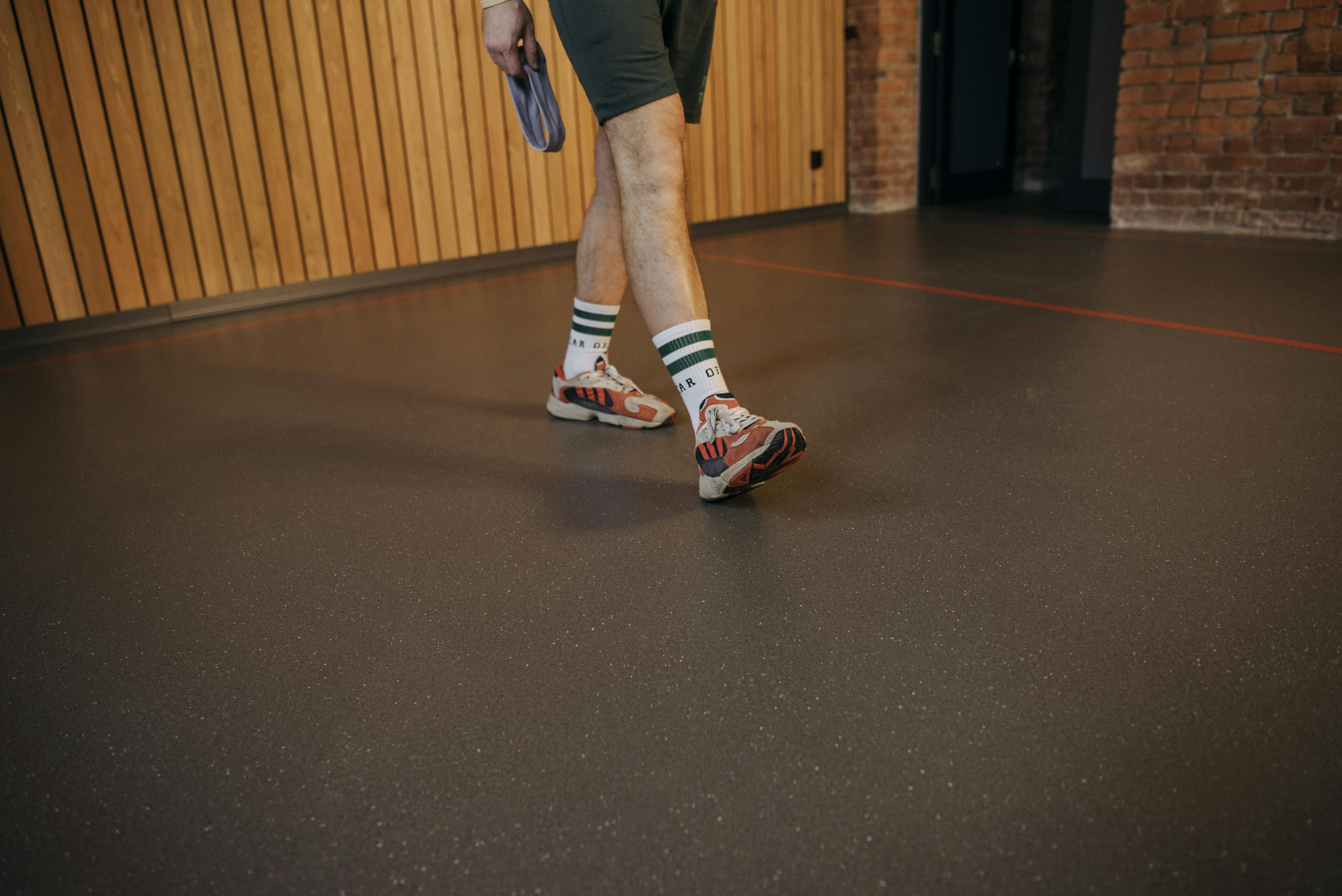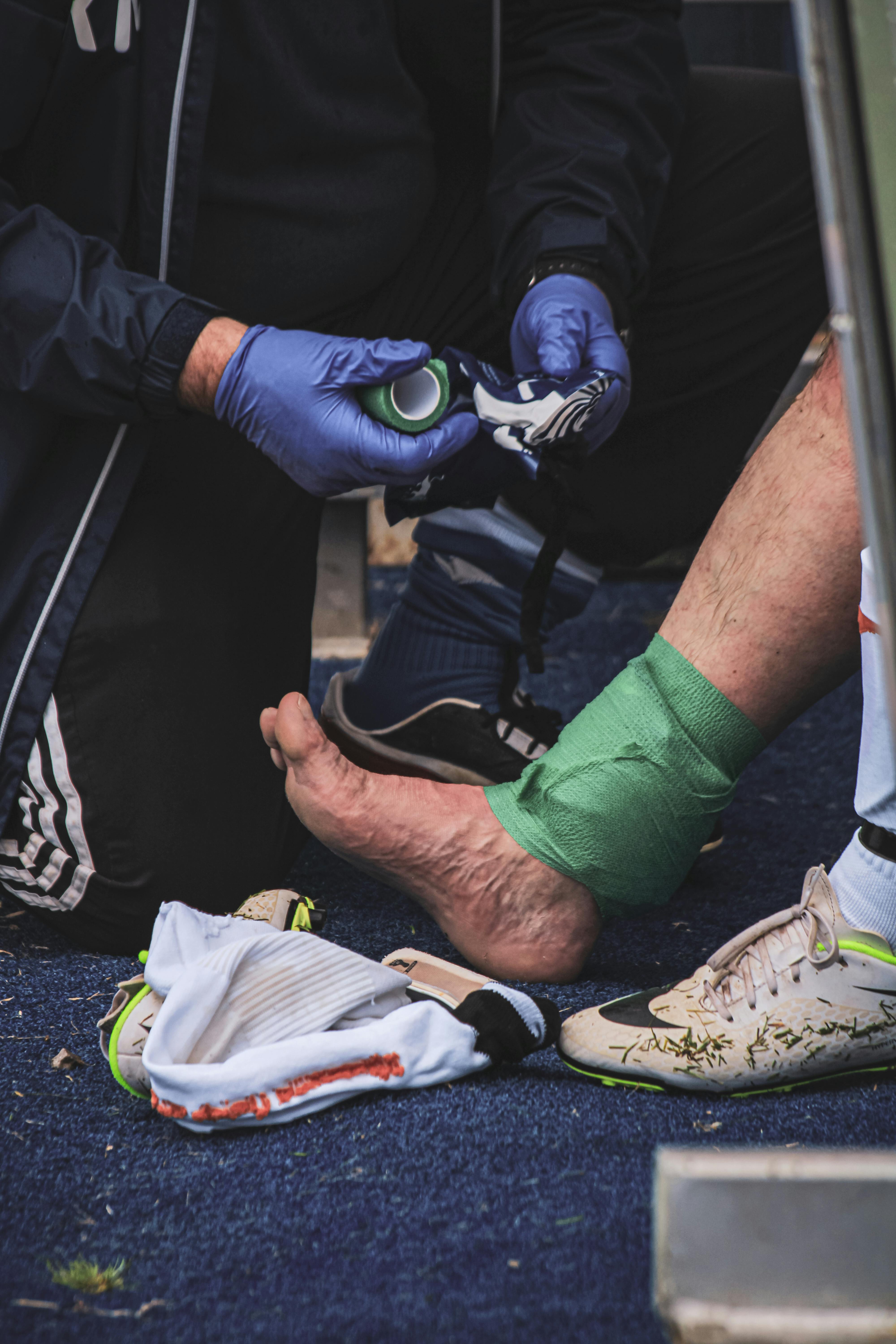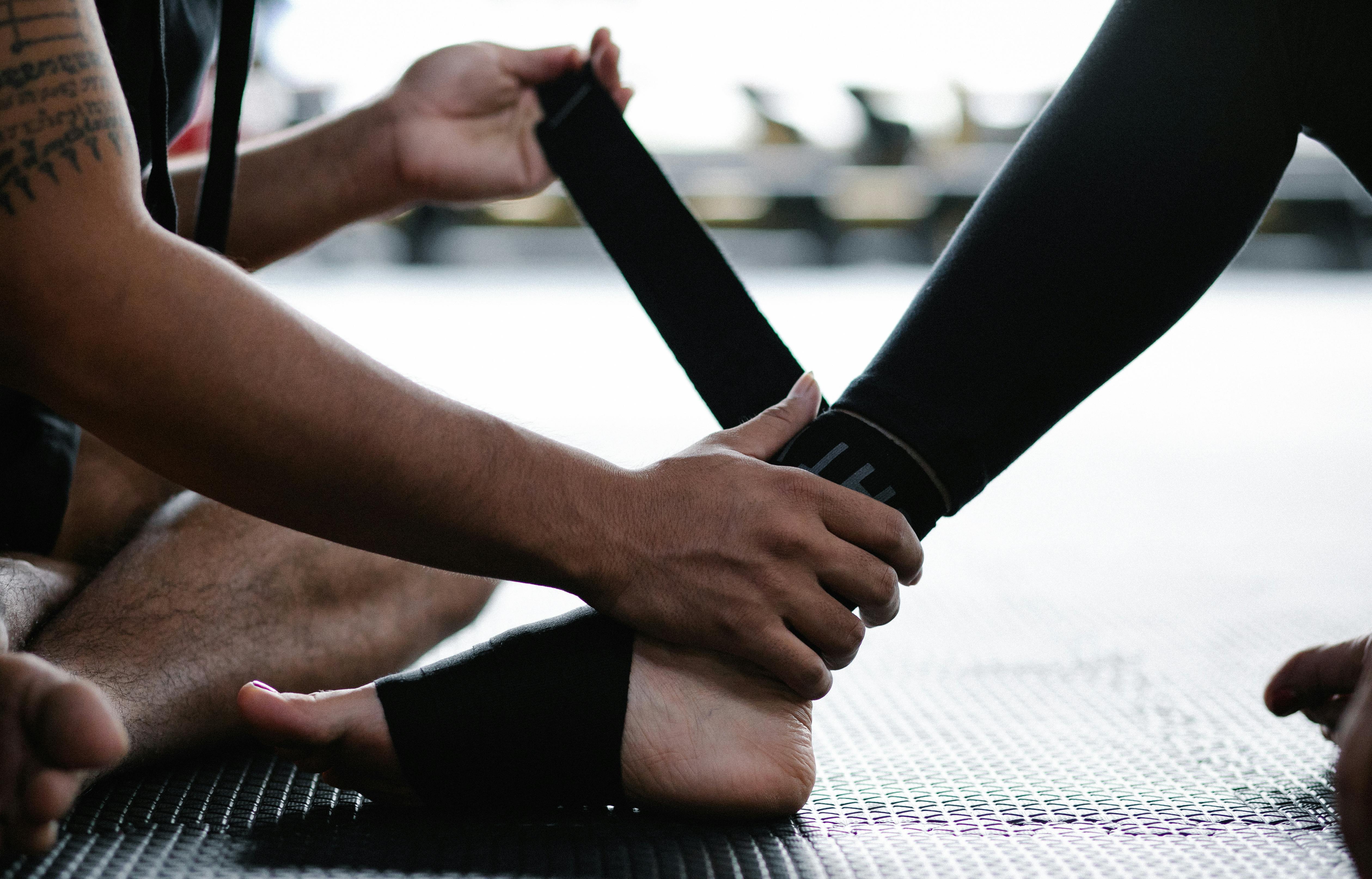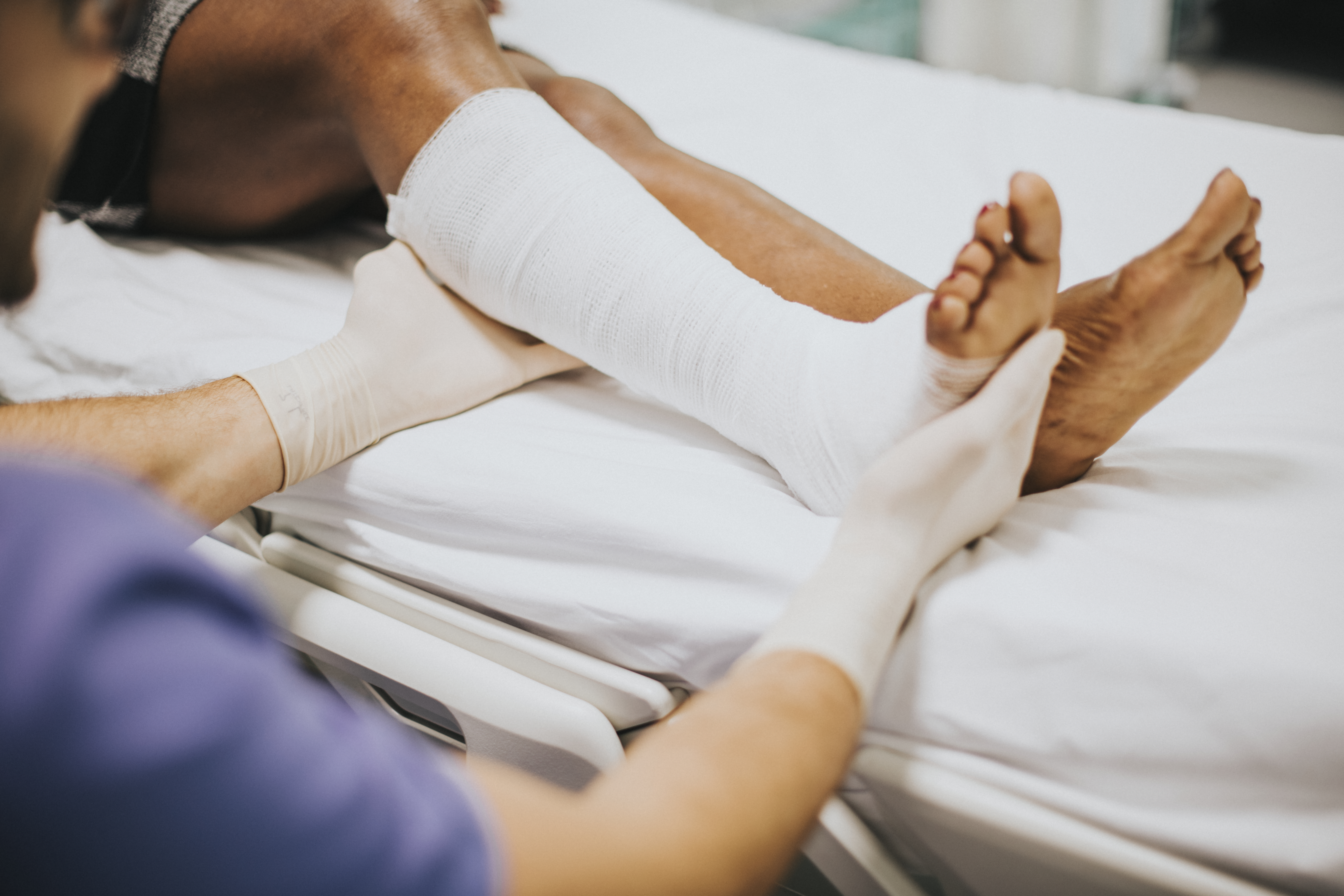How To Sleep With A Sprained Ankle (Easy ways)
Struggling with ankle pain while trying to sleep can be frustrating, especially when you're already dealing with discomfort during the day. However, making a few adjustments to your bedtime routine and sleeping position can make a big difference in your comfort and healing process.
In this article, we'll explore ways to ease ankle pain and swelling while you sleep, and we'll also delve into the R.I.C.E (Rest, Ice, Compression, Elevation) method to help speed up your recovery.
Let's tackle this together!
Table of Contents
Why can’t I sleep with a sprained ankle?
Sleeping with a sprained ankle can be tough, especially in severe cases, as inflammation is common during the initial healing stages.
While inflammation is a natural part of the healing process, it can cause discomfort and throbbing pain, making it challenging to sleep well.
Additionally, swelling tends to increase throughout the day, making it harder to find a comfortable sleeping position.
Poor foot and ankle positioning in bed can also exacerbate the issue, potentially lengthening the healing process.
To alleviate these challenges, it's important to take the following steps to prevent ankle pain while sleeping.
Elevation
To promote healing and reduce swelling in your sprained ankle while you sleep, try elevating it slightly above your heart level using spare pillows, blankets, or cushions.
This elevation helps prevent fluid buildup around the injury and decreases swelling. Continue elevating your ankle until swelling subsides, usually within 2-3 days.
If you prefer sleeping on your side, place pillows between your knees and ankles to elevate your ankle slightly.
Keep your knees bent at a 90-degree angle to avoid curling up in a fetal position, which could put pressure on your ankle.
By adjusting your sleeping position and using supportive pillows, you can enhance comfort and aid in the healing process of your sprained ankle.
Ice Your Ankle Before Bed
To ease swelling and pain in your sprained ankle while you sleep, apply a cold compress or ice pack for 15-20 minutes as part of your nighttime routine, especially in the first 2-3 nights after the injury.
The cold helps reduce swelling and discomfort, promoting better sleep. However, avoid sleeping with the cold compress on your ankle to prevent potential skin or nerve damage.
Remember to always place a cloth or layer of clothing between the cold compress and your skin to avoid prolonged, direct contact, which could lead to frostbite or nerve damage. By incorporating this simple step into your nighttime routine, you can effectively manage swelling and pain, facilitating a more comfortable and restful sleep.
Compression
Using compression to reduce swelling and ease pain from a sprained ankle can be effective, especially when you're active during the day or in a dependent position like sitting with your leg hanging down.
This helps prevent excessive swelling accumulation, leading to less pain and better sleep at night.
While compression can still be applied at night, its effectiveness may be reduced compared to daytime use.
This is because when you're lying down, especially if you're also elevating the ankle, there's naturally less swelling accumulation. Nonetheless, incorporating compression into your nighttime routine can still provide some relief and support for your sprained ankle.
Avoid Blankets or Sheets on the Injured Ankle
When sleeping with a sprained ankle, it's advisable to avoid having blankets or sheets directly on your feet, especially if you're lying on your back.
This can inadvertently put pressure on your ankle, potentially stressing the injured ligaments, especially with lateral ankle sprains.
Even light and constant pressure can exacerbate pain in the affected area. However, this doesn't mean you have to forgo blankets entirely; just try to avoid having them draped over the injured ankle whenever possible.
By being mindful of your sleeping position and minimizing pressure on the sprained ankle, you can promote better comfort and support for healing during sleep.
Anti Inflammatories
If you're finding it difficult to sleep with a sprained ankle, consider adding over-the-counter pain and swelling medication to your treatment regimen alongside elevation, ice, and rest.
It's important to stick to the recommended dosage and consult your doctor or healthcare provider, especially if you're taking other medications that may interact with NSAIDs negatively.
By incorporating these medications responsibly, you can alleviate discomfort and improve your chances of getting a good night's rest while your sprained ankle heals.
Remember, your comfort and well-being are paramount, so don't hesitate to seek guidance from your healthcare provider if needed.
Natural remedies for a sprained ankle
As you recover from a sprained ankle, several natural remedies can aid in easing pain, reducing swelling, and boosting the healing process:
- Stretches: While it may seem counterintuitive, gentle ankle stretches like ankle pumps can be vital for your recovery. These stretches improve blood flow, reduce inflammation, and enhance ankle mobility, preventing stiffness in the long run.
- Strengthening Exercises: Gentle exercises help strengthen the weakened ankle joint, reducing pain and restoring alignment. Strengthening the tissue surrounding the ankle accelerates recovery and minimizes downtime.
- Ice and Heat: Ice is effective for immediate post-injury swelling, while heat improves blood flow to the sprain. Alternate between ice and heat throughout the day for optimal pain relief and recovery.
- Elevation and Rest: Elevating the ankle above heart level reduces swelling by promoting circulation. Coupled with rest from weight-bearing activities, this simple remedy combats inflammation effectively.
By incorporating these natural remedies into your recovery routine, you can enhance your healing journey and expedite the return to optimal ankle function.
Remember to listen to your body and consult with healthcare professionals for personalized guidance throughout the process.
How long does recovery from a sprained ankle take?
Dealing with the pain of a sprained ankle can disrupt your daily routine, requiring days of rest in bed or on crutches.
Your recovery duration depends on the severity of your sprain, categorized by a sprain scale:
- Grade 1: Minor swelling and pain indicate a Grade 1 sprain, involving a stretch or small tear in the ankle ligament. Recovery may take up to five weeks.
- Grade 2: Considerable swelling and immediate pain characterize a Grade 2 sprain, with a partially torn ligament. Recovery may span up to six weeks.
- Grade 3: Significant swelling, pain, and mobility loss signify a Grade 3 sprain, the most severe type involving a completely torn ligament. Full recovery may require up to six months.
Regardless of the severity, it's crucial to fully recover before resuming sports or regular activities. Rushing back too soon increases the risk of recurrence, which affects up to 40% of patients with ankle sprains.
Regular progress check-ins with healthcare professionals can help gauge your readiness to return to normal activities safely.
Remember to prioritize your well-being and follow your recovery plan diligently to ensure a smooth and successful rehabilitation journey. Your health and recovery are paramount, and seeking guidance from healthcare professionals ensures you achieve optimal outcomes.
Bottom Line
Improving sleep with a sprained ankle can be challenging, but the strategies mentioned above have helped many individuals find relief.
While there's no universal solution, these approaches are generally safe to try, especially when guided by a healthcare professional like a doctor, physical therapist, or pharmacist.
By exploring these options with expert guidance, you can enhance your comfort and restfulness during the healing process.
Remember, everyone's situation is unique, so don't hesitate to seek personalized advice to find the best approach for your specific needs. Your well-being is important, and there are supportive resources available to help you through this recovery journey.
Also read How to prevent knee sprains (Guidelines)



